Jeans are sort of ideal daily wear, but going with jeans while doing fitness at the gym?
If you’re the type of person who goes around the gym about 5–7 days a week, I know this idea sounds ridiculous.
Long-time gym goers understand that nothing is more breathable and comfortable than great sweat-wicking, super tough, body-fitted, and lightweight professional gym clothes during intense training.
But that doesn’t mean no one ever wears jeans to the gym. You may still find a few such interesting people.
It sort of looks like they just finished work and rushed to the gym to do some good things for their health. We have nothing to blame them for just because we’re not from the same point of view.
Personally, I believe jeans are still good for jogging in the park or some casual walking-stuff that doesn’t require bending and sitting down too much.
However, the types of intensive fitness training at the gym require much greater flexibility, strength, and sweat. That’s why PTs often frown upon seeing these students wear jeans and attend their class. There’s no excuse!
We’ve got some good news and some bad news if you are wondering whether to wear jeans to the gym or not. Let’s check it out before you end up with your own decision!
Quick Navigation
Can you go to the gym with jeans?
Hmm, I’ll save the conclusion of the question “Can you go to the gym with jeans?” at the end of this post. Let’s go and see the good news first.
Why should you wear jeans to the gym?
People possibly wear jeans to the gym for some reason. Here is how.
1. Versatility

Many of us wear jeans every day, especially if you do manual work, sit in one place all the time, or need to be constantly on the road.
My previous company was an IT company in the field of outsourcing data jobs. Most of the staff here are IT people, and they wear jeans every day, every hour, and, no surprise, every month.
I used to wonder if they changed their pants every day before coming to the office.
I was super surprised when I visited my colleague’s house and saw that his closet was full of 30 pairs of jeans with almost the same color, material, and design.
Men actually lead much simpler lives than women.
For that reason, some people wear jeans to jeans just because they just finished work and ran to the gym right away to make sure they aren’t late for 8 p.m. dinner with their family.
When it comes to exercising, jeans are more comfortable than chino or khaki pants in some ways.
This allows people to easily compromise with a change of pants before a workout if they don’t store some professional gym outfits in their bag.
2. Acceptable features
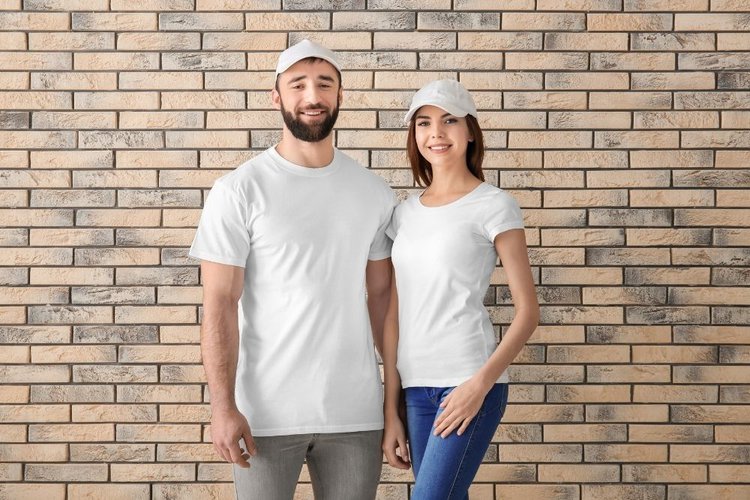
Some stretchy jeans have a fabric structure containing relatively high levels of polyester and spandex. This allows the material to stretch better than 100% cotton jeans.
Jeans are able to fit around the buttocks, waist, thighs, and ankles pretty well when the wearers do exercise. Therefore, they allow the body to move flexibly.
Besides, thanks to their ability to shrink after washing, jeans will not stretch excessively over time and use like other synthetic fabrics, even when machine washed. So, they last longer with your gym’s passion.
Unlike ordinary synthetic fabrics that do not literally absorb moisture, cotton jeans have excellent moisture wicking. They do not cause excessive sweat to be left on the skin after intensive training, reducing itching in these areas due to rubbing with sweat.
3. Anti abrasion
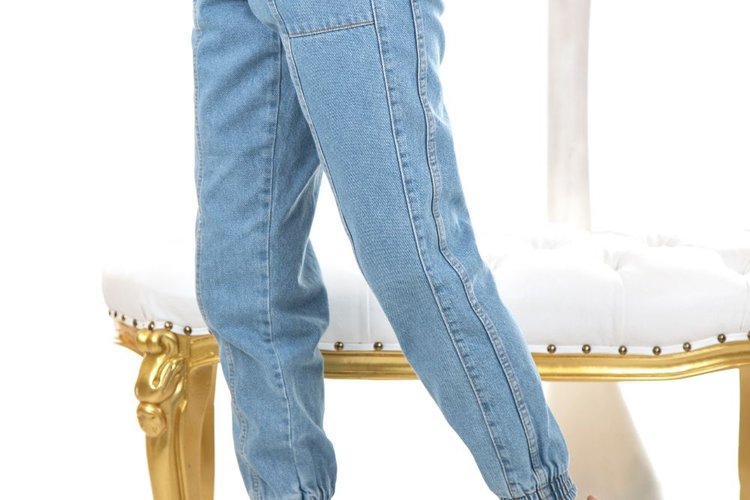
If you go to the gym regularly, you will notice that the gym pants’ crotch appears quite worn out after a couple of months of frequent use, no matter how expensive they are.
Some threads may have fallen apart or some of the fabric may be broken and jagged on the crotch surface.
You may be doing too much horizontal seated leg press, lat pulldown, or in-house cycling.
Friction with the sitting surface during continuous exercise with the machine and the high moisture content in the fabric due to perspiration increases the rapid fiber corrosion of normally thin synthetic materials.
I often have to change my gym pants almost every 3 months when I go to the gym 4–7 days a week.
Jeans are a different story when it comes to anti-abrasion, especially 100% cotton jeans. They are more resistant to abrasion than many other materials.
In addition, their crotch is also reinforced with sturdy crotch seams or even gussets. You probably won’t need to change your gym’s denim pants as often as I do.
4. It’s fine for doing light exercise
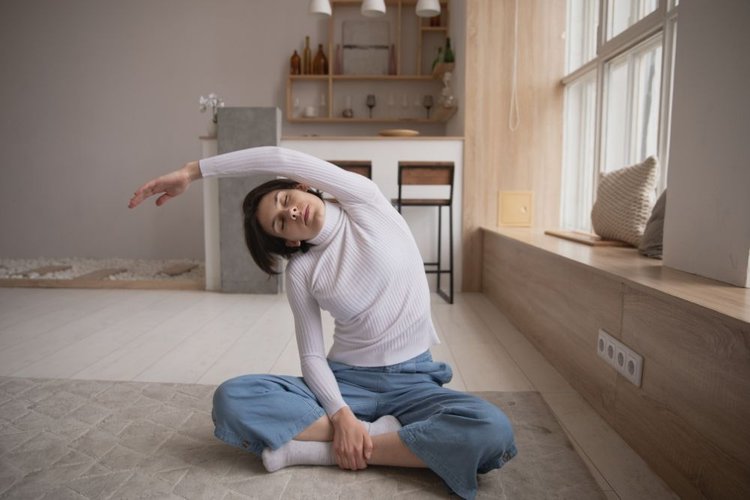
It’s all good to wear jeans to the gym for some light exercises with machines such as wide grip row, wide grip pull up, or such, since all you need to do is stand in one place and train your arms or chest muscles.
Jeans do not play much of a role in helping you or hindering you in these circumstances.
You probably won’t need to move your legs very much to do these exercises. So, jeans are sort of acceptable in these cases.
Why should you wear jeans to the gym?
Here’s what you should consider carefully before going with jeans to the gym.
1. Jeans are too baggy or too tight
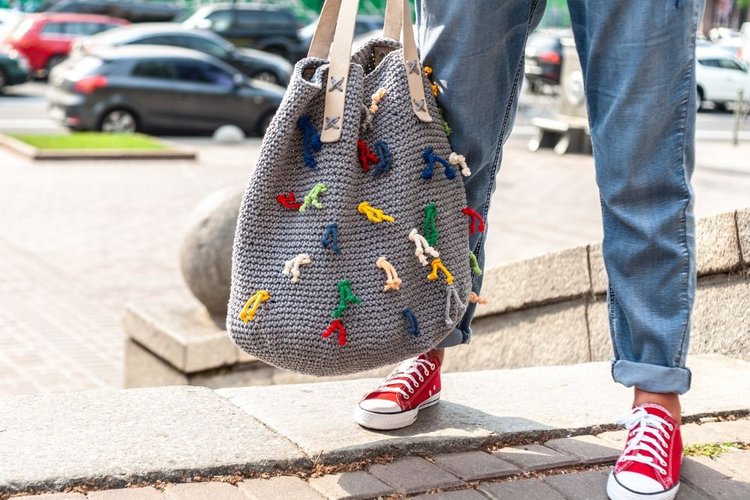
Depending on the material and design of the jeans, sometimes they don’t fit your body the way they should when it comes to doing exercise.
If you’ve got a big butt and a perfect waist, the jeans can be pretty loose at the waistband. You may encounter situations where you have to pull up your waistband every time you perform close-grip rows on a machine or when running on a treadmill.
The best fitted-body jeans could be skinny jeans, yet they can be pretty tight around either thighs or knees.
Although skinny jeans have a relatively good stretch due to the high spandex content in their fabric construction, this does not mean they will stretch as well as professional gym pants made from synthetic materials.
Wearing jeans while lifting weights manually becomes just ridiculous, and I bet you won’t ever like this experience.
I have no good feelings for you if you are about to put on either boot-cut jeans, boyfriend jeans, or some sagging jeans before heading to the gym.
These designs are sure to restrict the constant movement of your legs, waist, thighs, and buttocks while doing cardio, cycling, or yoga. With these entanglements on your body, you’ll never be able to work effectively.
2. Lack of breathability
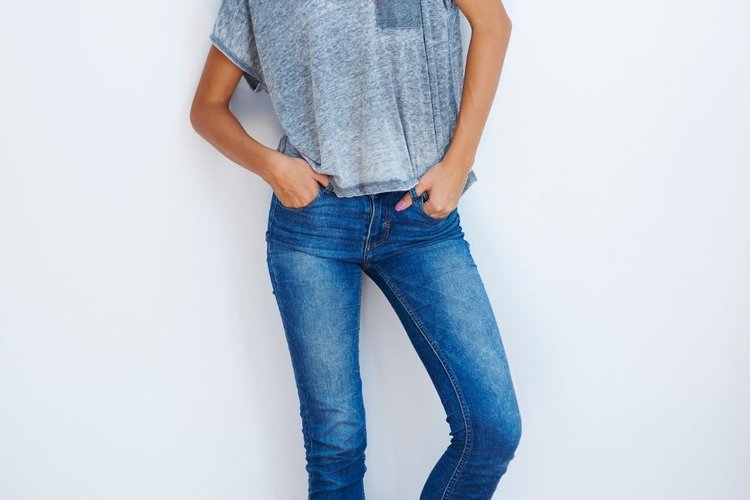
Cotton jeans have good moisture-wicking capabilities, but they tend to be less breathable. This is due to the dual woven technique used when producing cotton jeans.
It results in the high thickness and stiffness of the material, especially for 100% cotton jeans, which leads to fewer possibilities to cool down the body after doing exercise in the gym.
The body will heat up because it is difficult to sweat and lose heat when wearing jeans, causing muscle fatigue and exhaustion faster.
That’s why the materials recommended for gyms should be highly breathable with micro holes in the surface.
They help to release heat generated from within the body due to intensive exercise pretty quickly. The body will not lose water and muscle fatigue will occur after just a few minutes of exercise.
3. The stiff construction
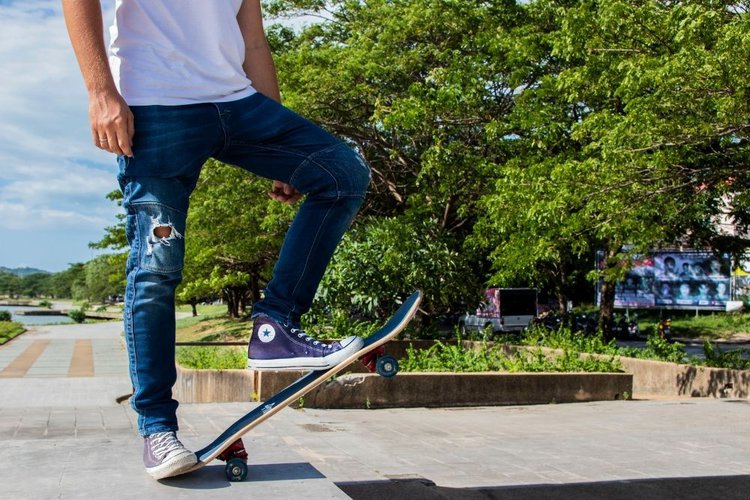
If you are sort of a sit-trainer, jeans are definitely not your buddy at the gym.
The sturdy construction of jeans with rigid and stiff crotch seams, side seams, and yokes can cause your buttocks, thighs, and groin to scratch or at least be uncomfortable when these areas have to rub constantly against the jeans fabric when you perform some sit-up bench work or some movement with a sit-up machine.
Most jeans don’t come with a stretchy crotch or stretchy seams. Therefore, if you intend to wear jeans to do exercise, you had better skip doing sit-up workouts.
In addition, 100% cotton jeans will shrink when exposed to water and moisture from sweat. This should make you feel somewhat breathless in the middle of the exercise. Every part of the body usually expands when we are trained and sweat strongly.
Therefore, the best gym pants should mold to your body comfortably, rather than restrict the wearer’s blood circulation, especially while doing exercises.
4. No way doing exercise well with a belt on the waistband
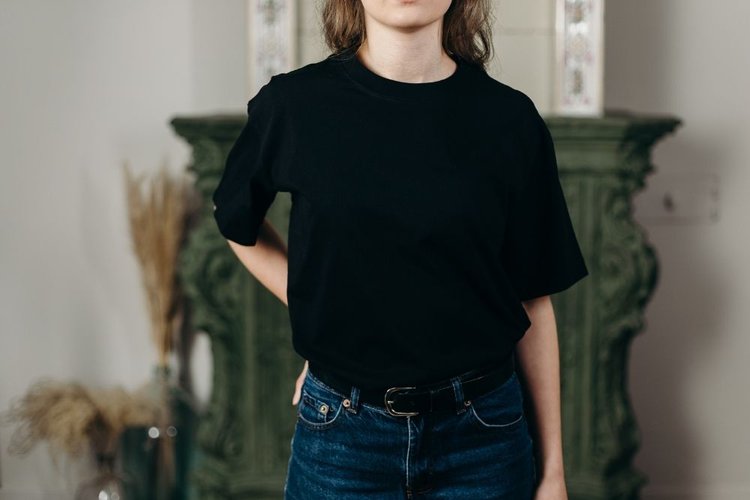
Jeans seem to be born to fit the waist and butts of women more perfectly than men. We don’t often wear a belt with our jeans (most women don’t do it).
But men are different. They always get help from a belt on their jeans’ waistband (even if the jeans have already fitted to their shape correctly).
Besides, this detail helps show off men’s power and masculinity in their style. But do men take their belts off the jeans’ belt loops before working out? I guess they won’t.
So, train your body with a couple of more weights around your waist. It doesn’t sound like a pleasant experience.
The belt on the waistband can interfere with breathing and the undulation of the abdomen when you exercise. You better go with something comfortable and moldable to your waist and belly during these times.
5. Jean fabrics are durable and wrinkled
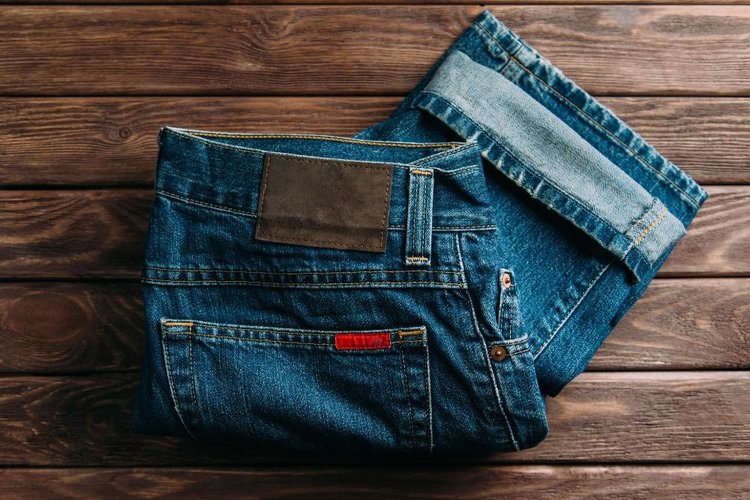
Since most jeans are mainly made from plant-based cotton, they tend to weigh a couple of pounds more than any type of synthetic fabric so far.
In addition, the structure of cotton jeans is usually thicker and stiffer, so the wearer will have to bear a greater amount of weight from the jeans than when wearing chino, khaki, or polyester pants.
An important feature is that jean fabrics often absorb moisture well. They trap moisture in the fabric from sweat and water produced during exercise and are not capable of draining the dampness out quickly.
Therefore, during the process of wearing jeans to training, denim pants proved to be a lot heavier than professional gym pants or sweatpants. This makes it difficult for the wearer to constantly run around or move their legs.
As a result, you will quickly get tired and exhausted.
Some cotton jeans have pretty low wrinkle resistance despite being treated with formaldehyde during the manufacturing process.
Jeans will wrinkle when you torment them with sit-ups or bench workouts continuously while at the gym. It’s definitely not a good idea to take a picture of you standing in front of the gym’s mirror with extra wrinkled and sloppy jeans.
6. Shorten jean’s lifespan

Last but not least, dirt, sweat, and grime either on your go or on the way you do exercise at the gym will get stuck firmly in the jeans’ fabric, causing the fibers to become stiffer and brittle.
The crotch will wear and tear faster when rubbed against the sitting surfaces of fitness machines.
The intensity of this friction is stronger than sitting in an office chair since you are about to move your butt all the time. These are certainly not factors to prolong your jeans’ lifespan.
Plus, wearing jeans when working out means you’ll be allowing body odor and sweat to stick to your jeans all the way out.
You’ll need to wash them more often, even right after your workout each day. Otherwise, your pants will leave a super sour and fishy smell in your home.
You may also need to use the hot steam washing mode to remove bacteria from your dirty jeans. These things cause jeans to quickly shrink, fade, and deform.
Some last words…
Now, I guess you have come up with your own decision about whether to go to the gym in jeans or not. Indeed, you can. However, their disadvantages often outweigh their benefits, as I have mentioned above. So, it’s better to invest in some sort of professional gym pants or sweatpants instead.
Hi, I’m Grace Alision, a fashion lover with a passion for helping women feel confident and beautiful through their style choices. I created this website to share my love for wedding guest dresses and, in the future, to explore concert outfit inspiration. Dresses have always been my favorite way to express elegance and individuality, and I’m here to make finding the perfect outfit fun and easy. When I’m not working on outfit ideas, I love discovering new trends and connecting with others who share my love for fashion.

